MAJOR SPOILERS AHEAD FOR THOSE UNFAMILIAR WITH THE SHOW
Written by Alina Mae Wilson
It has been confirmed—that spark of electricity that made the original Broadway cast of Into the Woods so unutterably unique remains. I can say this with absolute certainty because I attended the Into the Woods reunion performance this past weekend at the Segerstrom Center of Performing Art in Costa Mesa. It was so beautiful. I fell in love again.
It began with Mo Rocca, who acted as the interviewer for the duration of the performance. Rocca brought Stephen Sondheim (composer) and James Lapine (script writer) for a little Q&A to kick things off. They shared some interesting information, like the origins of the Into the Woods story. Not talking about the fairy tales here-turns out the writing of the musical was born of a desire to write a story that was a “mashup” of 1960s sitcoms. Luckily for the theatre world, James Lapine stated that he was way too lazy and just wanted to sell the idea–he didn’t want to do any writing! No, he wanted the stories to be written already. So the sitcom idea was scrapped, and they decided to start working on the fairy tale-based musical instead, paving the way for a generation of “what happened” like Wicked, Oz, and even ABC’s Once Upon a Time. They covered different reasons why the show is so unique, so different from pieces before it–for starters. It changed the way people view(ed) fairy tales. These are classic stories that people have grown up knowing; they are clear-cut and “black and white.” He further stated that this story of traditional tales is written to be what “life is really like.” This musical is unlike what people had expected from fairy tales. During some of the earlier previews, people were leaving the show during intermission because they thought it was already over–a busload of women were chased down by an usher right before they left! Hence, the phrase “To Be Continued” was added before the mid-show break.

Chip Zien, Joanna Gleason Photo Courtesy: DOUG GIFFORD
Complimenting Lapine, Sondheim stated, “James is one of the few people I know who can direct his work. He is unique.” It would seem that Lapine managed to find his equal, for Sondheim’s work here sets him apart from any other composer. When Joanna Gleason (the Baker’s Wife) and Chip Zien (the baker) came out, they were asked about her experience singing Sondheim’s songs. Rocca: “What was it like, singing this score every night?” Gleason: “Singing the songs from this show was the most satisfying experience I have ever had onstage. There is no change between the dialogue and the singing; there is no mental switch that must be flipped”. Here Gleason highlighted one of the reasons this score is so strange, worthwhile, and different from even the most beloved fairytale depictions. In an era when every song is firmly rooted in choruses to bail the singer out of any jeopardy, this could also make performing more challenging. The songs here are about thought processes, emotional responses to specific situations, and working one’s way through the adventures that many in the audience are familiar with. But although friendly, these stories are changed to make the characters more identifiable to modern-day viewers. Lapine and Sondheim likened the Baker and the Baker’s Wife to a couple from the Bronx, a couple so ordinary that one can immediately understand and appreciate their struggles. Gleason revealed that she was the one who suggested that the Baker’s Wife be a common woman trapped in the wrong story. Sondheim laughed at this but confirmed that this was the only time he had ever taken a line for a song from a performer he was working with. This revelation of Gleason and Sondheim’s comprehension and agreement towards the character’s intentions can be taken as further evidence of how synchronized this coalition of individuals seems to be with the piece they were charged with bringing to life.
Speaking of synchronicity, Gleason and Zien did a rendition of “It Takes Two” as endearing as if they were still performing the show. Most people will agree that experiencing a song live is better than listening/watching a recording, but allowing for the passage of over twenty years might fill one with doubts. In the case of Zien and Gleason, those doubts are unfounded. The maturity of their voices and affection was more enjoyable for me than their performance on the DVD recording. They still have that chemistry that convinces the viewer that they are a married couple on an adventure, and they do not seem shy about confessing their tenser moments. When Rocca wondered what their friendship was like, they laughed and said it was “up and down, up and down” Zien gestured as though mimicking a roller coaster. Gleason announced, “Chip is the only cast member I have ever worked with that I have hit!” I could not help but feel the casual degree with which Gleason and Zien regarded one another added to the skill that they had/have in portraying a married couple (it could also just be that they are both professionals that know how to act, but it is nice to see long-lasting friendships regardless of the context).
Gleason and Zien volunteered a few more facts for the trivia section. These include things like the theBakthe bakeries having a name. It turns out that there was a woman named Mary Baker Eddy. It was therefore deemed fitting for Gleason to call the Baker’s Wife, Mary, and the Baker, Eddy. Another tidbit, Lapine stated that Snow White (actually, he said Sleeping Beauty, but she has nothing to do with an apple, so let’s assume he meant Snow White) originally had a large enough part in the show that they decided to have an apple roll onstage immediately after the song Moments In the Woods. The Baker’s Wife would see it and take a bite while continuing on her path. Jack would then reveal that he had discovered her body in a footprint, but that death was unnecessary for the plot.

Kim Crosby, Robert Westenberg, Mo Rocca Photo Courtesy: DOUG GIFFORD
Kim Crosby (Cinderella) made her entrance and fulfilled every expectation one might have for On the Steps of the Palace. She was joined by Robert Westenberg (Cinderella’s Prince), and Rocca joked about their relationship. “So,” he laughed, “you two still see each other?” “Oh, from time to time,” was the cheerful response. For those who do not know, Crosby and Westenberg married each other in real life. Rocca asked whether their lives more closely resembled the “pre” or “post” intermission portion of the show. More laughs all around, and after a few seconds, it was decided that it was more post. “Seriously, we are two of the most boring people you will ever meet,” said Crosby. “I mean, some people think it’s cool they are on youtube, but that is about it.” “Yeah,” joins Westenberg, “You can find us on Google; that’s about as cool as it gets.” They continued to talk about their early experiences with the show, including the audition process. Crosby’s comments on her audition speak to every actor who has experienced anxiety. “I used to have a blue dress I liked. I wore it to my first audition, and when I got the callback, I figured, you know, that dress had something to do with it. I wore it to the second call back, the third, and the fourth. When I walked in, they [Sondheim and Lapine] just started laughing. I think they had a bet ongoing on whether could it again.” Lapine chuckled and said that t asked her if she had another dress. Westenberg mentioned that the first time he saw Crosby, he leaned over and asked someone, “Who is that?” “Dude,” they whispered, “that’s your WIFE!”
Of course, she would be playing his wife in the show. But as fate would have it… Rocca mentioned that Crosby had played Cinderella in the Rodgers and Hammerstein production when she was in high school. He asked her if she could outline some differences between the R&H production’s version and the ITW version of the character. Crosby paused. “Well, they are completely different. In, Into the Woods, she is much more fleshed out, has some control, goes out and does things, and doesn’t just ride this wave of life and let things happen to her”. She is, of course, absolutely correct.
In ITW, Cinderella has agency and control that defines her in all other versions of her story. However, at the same time, Cinderella continues to embody the qualities that make her. Watching the story unfold, there is no disconnect between the Cinderella onstage and the Cinderella that is so near and dear to everyone’s hearts. One of the lines that resonated with me is right after the prologue when a weeping Cinderella begs her mother’s spirit for advice. “What is wrong with me, mot, her? Something must be wrong…” This type of self-blaming is not unusual for victims of abuse or neglect. Cinderella’s thoughts and actions here define her as a natural person, setting her apart as a natural person experiencing real things as opposed to some paragon of virtue which is relentlessly cheerful without rhyme or reason–here Cinderella’s actions before and after the ball are justified. As Crosby says, she ultimately “learns that she has a choice.” And although Cinderella here has her instances of frustration, confusion, and even pain, Lapine and Sondheim still manage to make her retain that goodness she is so well known. Cinderella is not unique in this instance, for this solid character development is evenly distributed throughout the cast.
Westenberg performed as both Cinderella’s Prince and the Wolf that pursued Little Red Riding Hood. He stepped forward to perform “Hello Little Girl,” with Rocca pointing out that we can’t have the Wolf without the little girl–out steps Danielle Ferland (Red), nearly skipping into the spotlight. Once again, I was shocked at the quality of the performances. Westenberg hit every note and was incredibly predatory; no wolf mask or other costume parts required. Ferland’s acting was on par with her performance from years ago, her Little Red identity visible to everyone present. In a later segment of the night, they mentioned things like Wolf’s development regarding his costume–apparently, his nether member used to be so prominent that it swayed like a pendulum. Was it inappropriate? Did the public reject them? No, but the gales of laughter from the audience were so overwhelming that Westenberg and Ferland got lost in the scene because they couldn’t hear their lines. The Wolf’s costume shrank six times. Although they did not specifically discuss the issue that night, I feel that the sexualization of the Wolf forms a connection between the dangers in fairy tale land and the real-life dangers facing today’s children. Of course, this parallel is only apparent to adults in the audience, and there is the other side of the coin that finds it unnecessary–wouldn’t the message about “nice” being different than “good” still hold if the Wolf was done up in a suit? This is the only issue for which I could take or leave any answer.

Ben Wright, Danielle Ferland, Mo Rocca Photo courtesy: DOUG GIFFORD
When asked how he keeps in shape for singing, Ben Wright (Jack) mentioned a few things. He said he tries to sing now and again, does fundraisers, takes every chance he’s offered to sing songs from ITW and is blessed with a set of vocal cords. That last explanation cannot be denied because his rendition of “Giants in the Sky” was not one note off. His clear voice and emotional charge rang through every word. He and Ferland were interviewed together. The first question was what it was like for them being in the show as teenagers, and Wright informed us that he was 32 when he was in ITW. Now that is something I did not know and would never have guessed–maybe mid-20s at the most. They discussed their educational experiences; Ferland mentioned that Lapine wrote her college letter of recommendation, and Wright talked about how he has left and reentered the performance industry three times. “I started performing when I was seven. Even though I loved it and did it for years, Wright explained that it didn’t pack the punch I needed to make it my life’s work.” Despite this, he had had some pretty incredible experiences, involving meeting a younger man who exclaimed, “You’re the guy everyone was trying to sound like when I was in high school!” Wright is now married with four children and, according to his biography, is an advocate for accepting and including people with intellectual and developmental disabilities. Ferland discussed her continued acting career and her stint as the Baker’s Wife in a regional theatre production of “Into the Woods.”
And then she was introduced. The incomparable Bernadette Peters–is that her new legal name? It works. Bernadette Peters is just in her category. Her voice’s eery quality, coupled with an openly blunt approach to the character, perfectly solidified the Witch’s identity as “not good, not nice…just right”. In Peters’ own words, the Witch is just
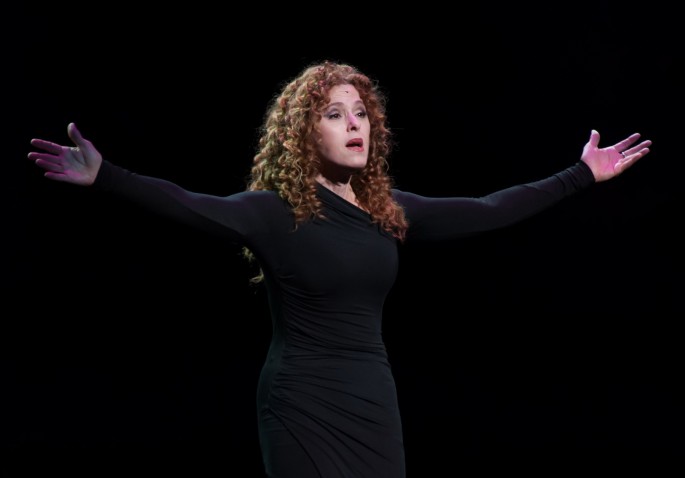
Bernadette Peters Photo courtesy: DOUG GIFFORD
pragmatic. We all know she does not mince words; she does not worry about sparing people’s feelings; she calls it as she sees it. And that makes her unpopular. Peters told Rocca that she had always been sworn to secrecy about the details of the Witch’s transformation sequence…until now. Originally, Lapine and Sondheim went to a magician who proposed an elaborate setup that would involve spending millions of dollars on excessive equipment. They took his suggestions under advisement and ultimately solved the problem of the Witch’s transformation scene themselves. All they needed was a body double. They recorded Peters’ dialogue for the location and had an actress of similar size with identical makeup come onstage. Peters would walk behind a tree and go down a trapdoor while the double came out and mouthed the words to the scene. Peters would then go down, change into the beautiful Witch, and the two actors would switch again after the double took the potion. Peters came out hunched in her old cloak, only to cast it off to reveal the end of her curse. When asked about her costume, Peters told Rocca that she brought it with her–and she presented him with a vast pointed witch nose. “I’ve kept it for 28 years!” she exclaimed. She positioned it perfectly. It was a hit. We found out that Pamela Winslow (Rapunzel) and Chuck Wagner (Rapunzel’s Prince) were in the audience that night. I turned around, and they were about 8 feet away, which was an incredible little moment for me. Peters moved on to sing “Stay With Me” to the audience. The tremulous tone in her voice as she implores her adopted daughter to remain safe and by her side speaks not only to parents but anyone who has ever known love in a harsh world. “Stay a child while you can be a child” makes the heartache with the desire for innocence lost. Her desperation, love, fears, and anger are not simply seen but felt. The cast joined Peters to perform “Your Fault,” “Last Midnight,” “Children Will Listen,” and “the Finale.” The songs are exemplary, and Peters’ eerie voice stood out as the harbinger of doom in “Last Midnight” and the ominous yet almost soothing warning delivered in “Children Will Listen.”

Danielle Ferland and Robert Westenberg Photo Courtesy: DOUG GIFFORD
Into the Woods is a story about people in a way that so few stories these days are about people. The morals of the original tales remain present while delving deeper into the characters. This allows for introducing new morals applicable to the modern day. These people from different walks of life venture into the woods, facing the dangers that are ever-present in the world, and deal with them as best they can. The music is beautiful, the singing from the original cast is on point, and their personalities suit the whole piece perfectly.
10/10
If you liked this article, subscribe with your email on the front page.

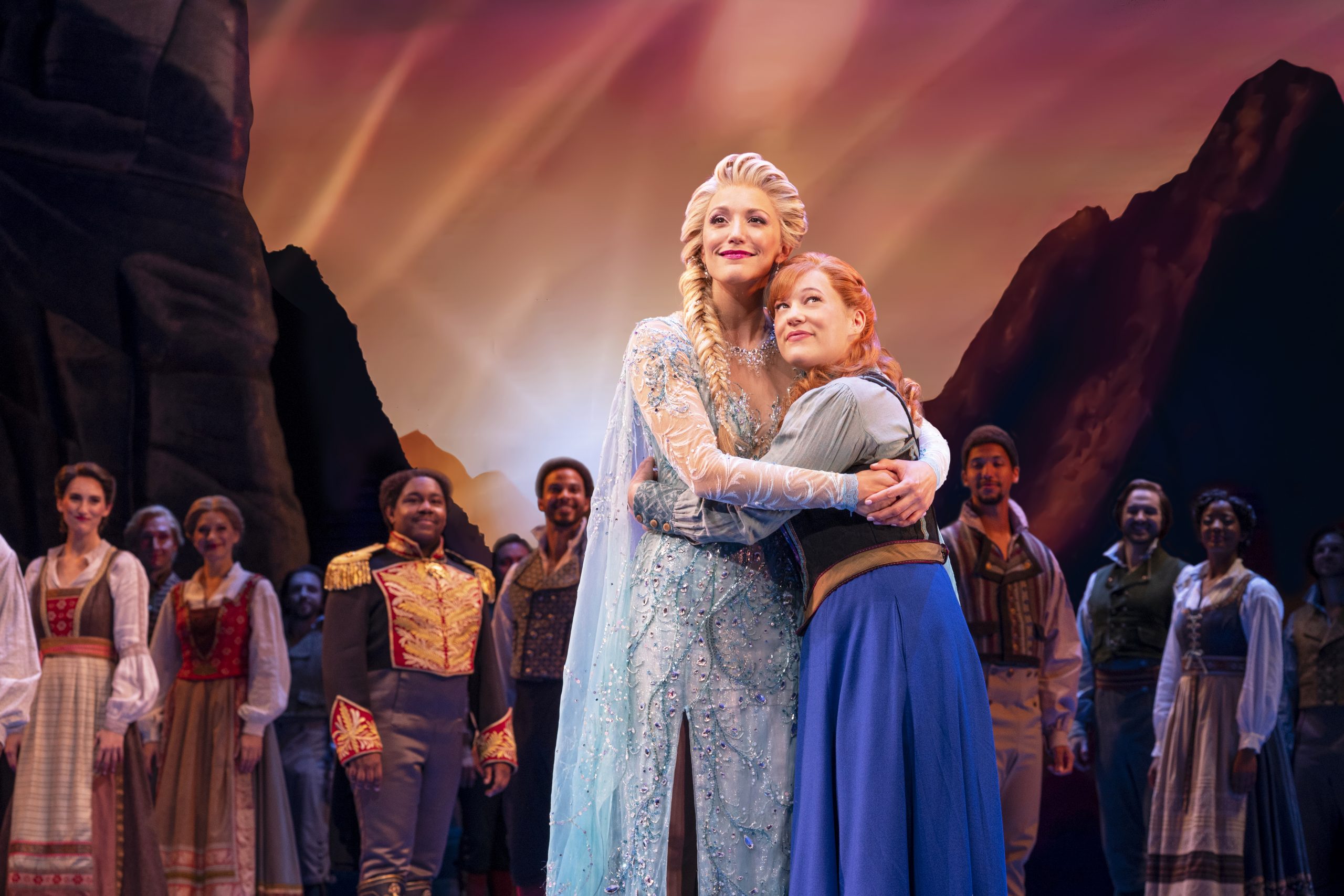


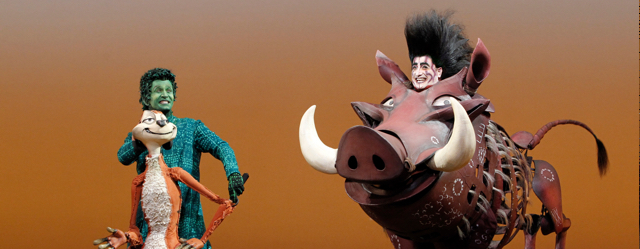


























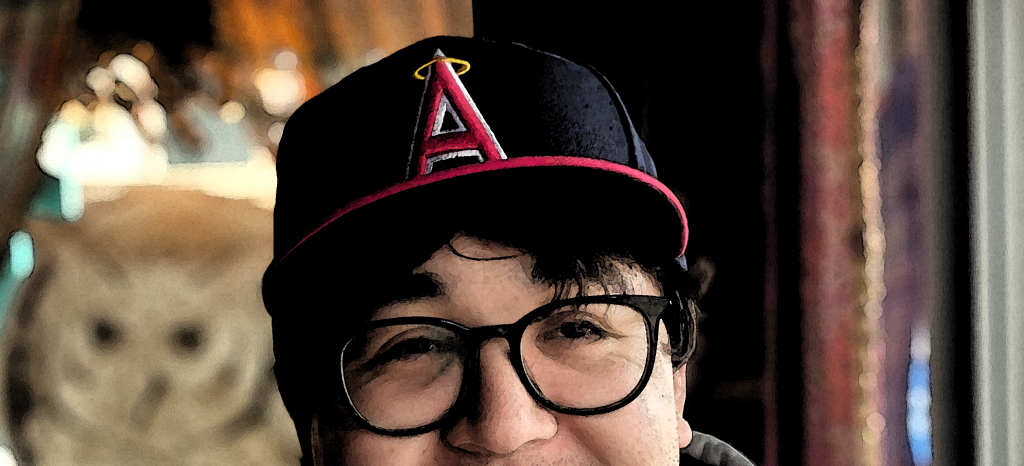








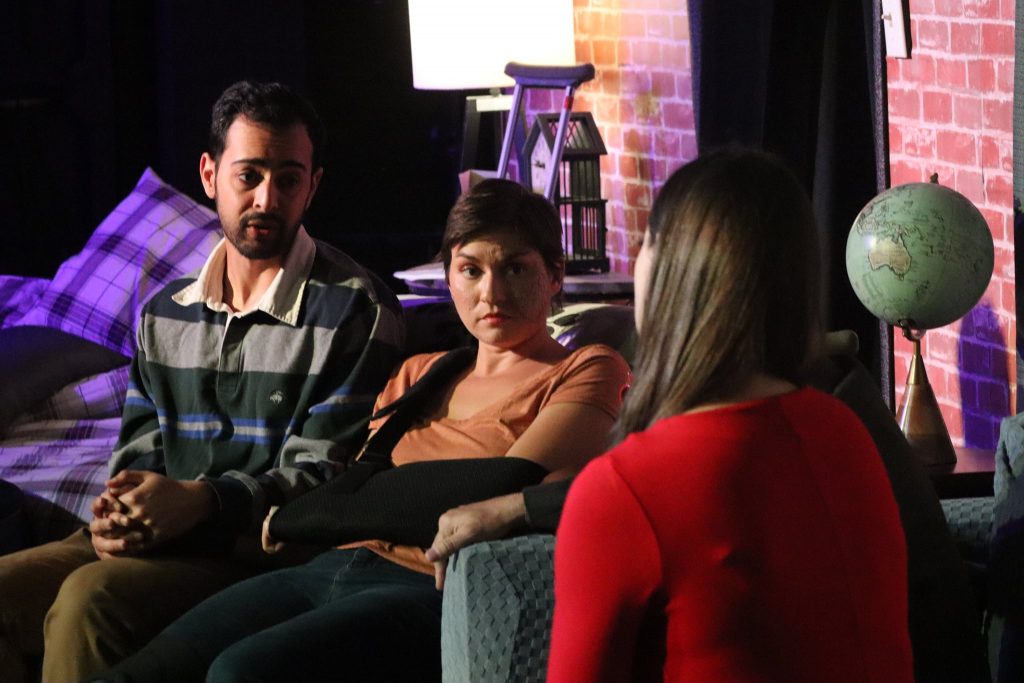






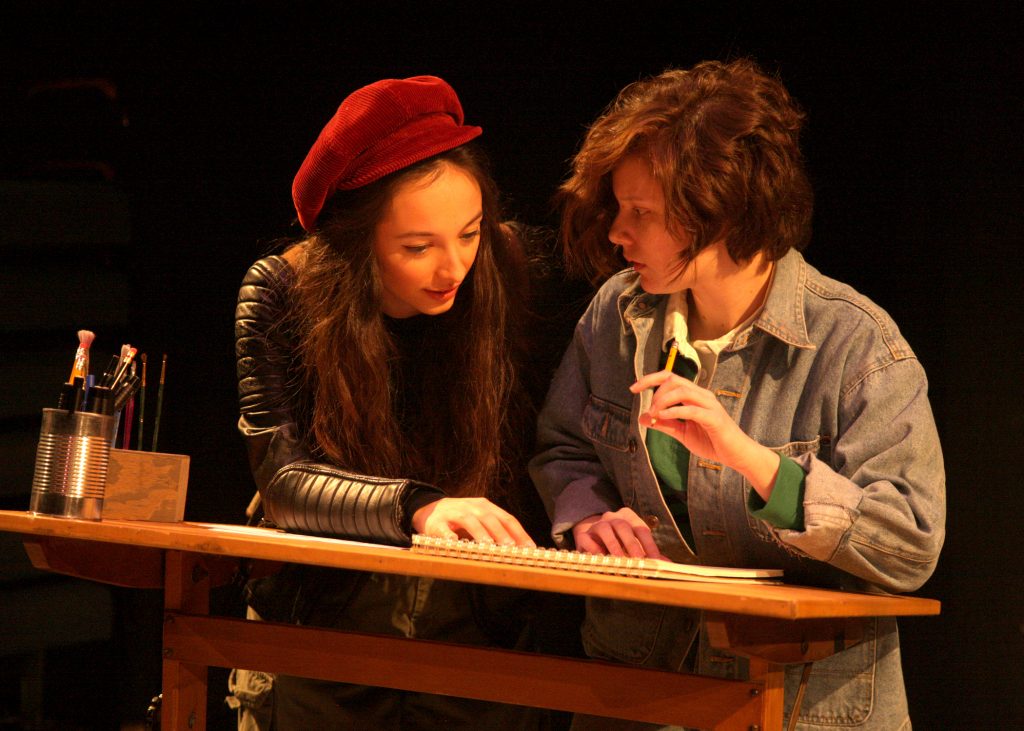






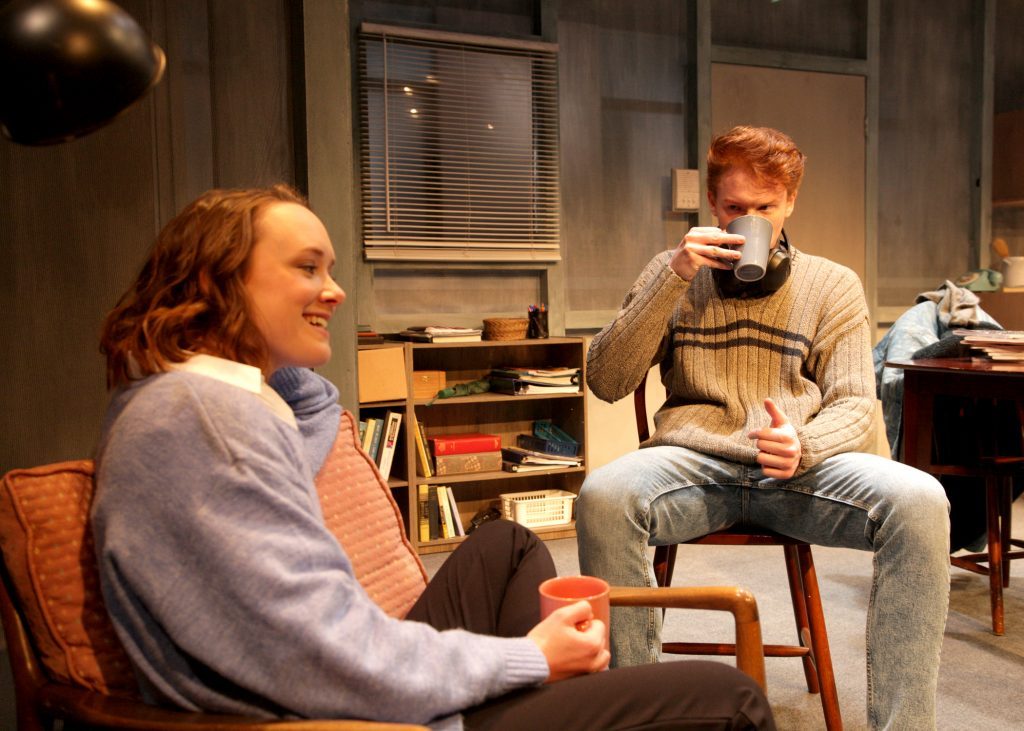

What a beautiful and thorough review! Sends chills up my spine just imagining the original show (which I saw) and the discussion/Q&A/performance of Sunday, November 9th. Thank you.